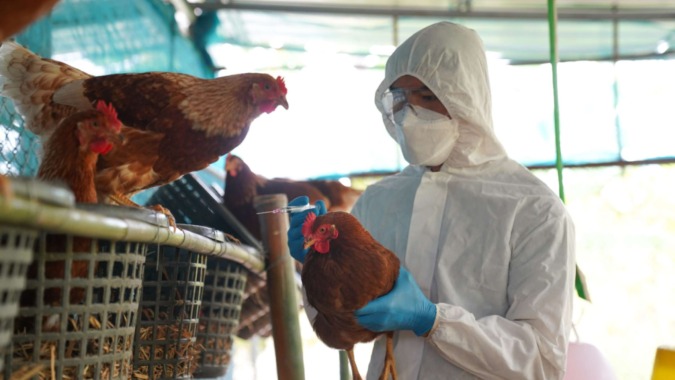
Tourists are being cautioned against approaching sick or deceased birds that are appearing on the UK’s beaches due to an ongoing outbreak of avian influenza that is severely affecting wild bird populations.
The UK coastline has seen an unprecedented number of infected seabirds, making this the largest outbreak of the virus outside its usual seasonal period, and it shows no signs of abating even in the summer months.
The Royal Society for the Protection of Birds (RSPB) has raised concerns about the rapid spread of the disease among seabird populations, expressing fears that the situation could escalate into a catastrophic crisis.
Despite the UK Health Security Agency (UKHSA) stating that the risk to humans is minimal, it is essential for beachgoers to take precautions. They are advised to refrain from approaching any dead or unwell birds, to keep their dogs on a leash, and to promptly report any incidents involving birds to the appropriate authorities.
In recent weeks, numerous cases of avian flu-related bird deaths have been documented along various UK beaches.
These include locations such as the Sefton Coast, beaches near Blackpool, Stonehaven Beach in Aberdeenshire, and the Isle of Wight.
Connect With Us on Social Media
Understanding Avian Influenza
Avian influenza is caused by influenza type A viruses, which belong to the family Orthomyxoviridae. These viruses have a unique ability to undergo genetic changes, leading to the emergence of new strains.
The virus is classified into two main groups based on its pathogenicity: low pathogenic avian influenza (LPAI) and highly pathogenic avian influenza (HPAI). LPAI strains typically cause mild or no symptoms in birds, while HPAI strains can result in severe illness and high mortality rates.

Transmission to Humans
The transmission of avian influenza from birds to humans is rare but can occur under certain circumstances.
Direct contact with infected birds, their secretions, or contaminated environments are the primary sources of transmission. In some cases, the virus can undergo genetic reassortment with human influenza viruses, leading to the development of novel strains with the potential to cause pandemics.
Symptoms in Humans
When avian influenza infects humans, the symptoms can range from mild to severe and may include fever, cough, sore throat, muscle aches, and respiratory distress. In severe cases, it can progress to pneumonia, acute respiratory distress syndrome (ARDS), and even death.
Certain subtypes, such as H5N1 and H7N9, have been associated with severe illness and fatalities in human cases.
Prevention and Control Measures
Preventing the spread of avian influenza requires a comprehensive approach involving both animal and human health sectors. Some key preventive measures include:
- Biosecurity in Poultry Farms: Implementing strict biosecurity measures on poultry farms is crucial to prevent the introduction and spread of the virus. This involves controlling access, disinfection protocols, and minimizing contact between wild birds and poultry.
- Surveillance and Monitoring: Regular monitoring of bird populations, both domestic and wild, helps in early detection of the virus and prevents its further spread.
- Proper Cooking and Hygiene: It is essential to ensure that poultry products are thoroughly cooked to destroy the virus. Additionally, practicing good personal hygiene, such as handwashing, can reduce the risk of transmission.
- Vaccination: Vaccination of domestic poultry against avian influenza is an effective measure to control its spread and protect both birds and humans.
- Culling Infected Birds: In case of outbreaks, culling infected and exposed birds is often implemented to prevent the spread of the virus.
Impact on Public Health
Avian influenza outbreaks have significant implications for public health. Though human cases are relatively rare, they can lead to severe illness and death. Moreover, the potential for the virus to undergo genetic changes and develop into a pandemic strain is a major concern for global health authorities.
During outbreaks, controlling the spread of the virus becomes a challenge, leading to economic losses in the poultry industry. Trade restrictions on poultry products from affected regions can also impact economies and livelihoods.
Conclusion
Avian influenza remains a major concern for both animal and human health. Continuous surveillance, strict biosecurity measures, and international cooperation are essential to prevent and control outbreaks.
Public health authorities need to remain vigilant and prepared for potential pandemics by closely monitoring avian influenza strains and improving response capabilities.
What's Your Reaction?
One of my friends once said, I am in love with words and a zoned out poser... well, I will keep it the way it has been said! Besides that you can call me a compulsive poet, wanna-be painter and an amateur photographer





